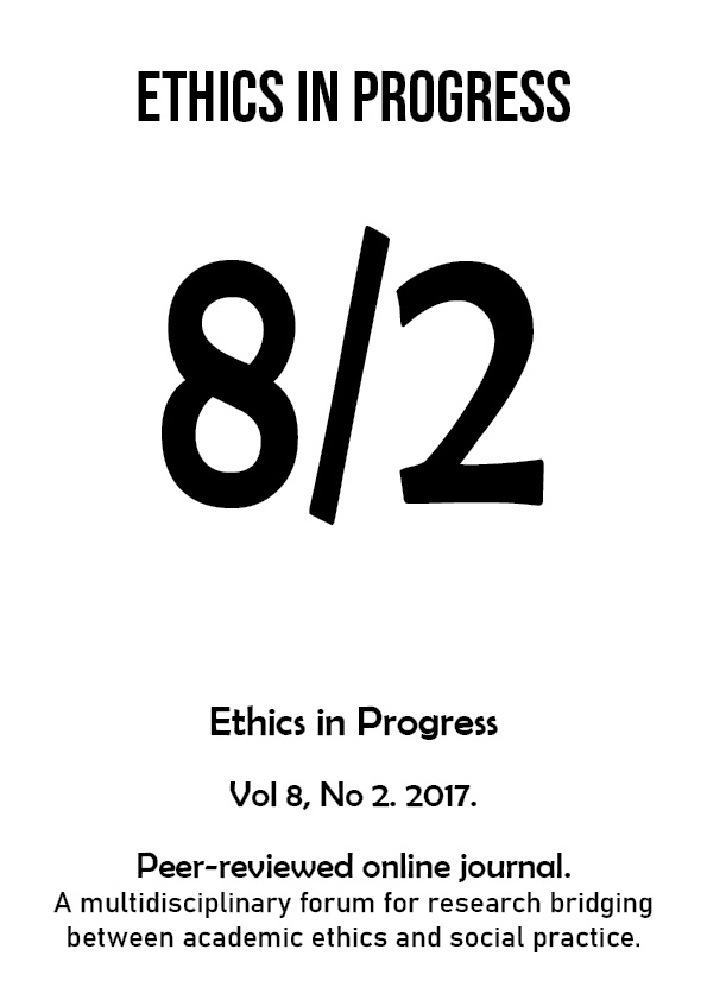Abstract
This article is an attempt to show that the KMDD® method is the best for both our brain and our moral functioning, which undoubtedly has its basis in the brain. At the same time, it is an attempt to draw attention to the importance of planning interventions (e.g. at the educational level) which stimulate moral development in accordance with the psychological and neurobiological functioning of an individual. The paper briefly presents the neuropsychological context of moral functioning, and then a series of arguments in support of the thesis that the scientifically proven effectiveness of using the KMDD® method has its support in adapting the method not only to one's pattern of individual behavior, but also to the proper functioning of one's brain.
References
Banse R. 2001. "Affective Priming With Liked and Disliked Persons: Prime Visibility Determines Congruency and Incongruency Effects." Cognition & Emotion 15:501-520.
Calvo M. G. & Avero P. 2008. "Affective Priming of Emotional Pictures in Parafoveal Vision: Left visual Field Advantage." Cognitive, Affective, & Behavioral Neuroscience 8 (1):41-53.
Churchland P. 2011. Braintrust: What Neuroscience Tells Us about Morality. Princeton: University Press.
Damasio A. 1994. Descartes' Error: Emotion, Reason, and the Human Brain. New York: Putnam Publishing.
Demarin V., Morovic S., & Bene R. 2014. "Neuroplasticity." Periodicum Biologorum 116 (2):209-11.
Draganski B., Gaser C., Bunsch V., Schuierer G., & Bogdahn U. 2004. "Neuroplasticity: Changes in Gray Matter Induced By Training." Nature 427 (6972):311-12.
Gazzaniga M. 2009. Human: The Science Behind What Makes Your Brain Unique. New York: Harper Perennial.
Greene J. & Haidt J. 2002. "How (and where) Does Moral Judgment Work?" Trends in Cognitive Sciences 6 (12):517-23.
Grossberg S. 1999. "The Link between Brain Learning, Attention, and Consciousness." Consciousness and Cognition 8 (1):1-44.
Harenski C. L., Antonenko O., Shane M. S., & Kiehl K. A. 2010. "A Functional Imaging Investigation of Moral Deliberation and Moral Intuition." NeuroImage 49:2707-16.
Huebner B., Dwyer S., & Hauser M. 2008. "The Role of Emotion in Moral Psychology." Trends in Cognitive Sciences 13 (1):1-6.
King P. M. & Mayhew M. J. 2002. "Moral Judgment Development in Higher Education: Insights from The Defining Issues Test." Journal of Moral Education 31 (3):247-70.
Koenigs M., Young L., Adolphs R., Tranel D., & Cushman F. 2007. "Damage to the Prefrontal Cortex Increases Utilitarian Moral Judgments." Nature 446: 908-11.
Kohlberg L. 1984. Essays on Moral Development, Vol. 2: The Psychology of Moral Development. San Francisco: Harper & Row.
Korzeniewski B. 2010. From Neurons to Self-Consciousness: How the Brain Generates the Mind. London: Gateway Books.
LeDoux J. E. 1996. The Emotional Brain. New York: Simon and Schuster.
Lind G. 1985. "Moral Dilemmas. Philosophical and Psychological Issues in the Development of Moral Reasoning," in C. G. Harding (Ed.), Growth and Regression in Cognitive-Moral Development. Chicago: Precedent Publishers (99-114).
Lind G. 2003. Moral ist lehrbar. Handbuch zur Theorie und Praxis moralischer und demokratischer Bildung. München: Oldenbourg Verlag.
Lind G. 2008. "The Meaning and Measurement of Moral Judgment Competence Revisited – A Dual-Aspect Model," in D. Fasko & W. Willis (Eds.), Contemporary Philosophical and Psychological Perspectives on Moral Development and Education. New York: Hampton Press (185-220).
Lind G. 2016. How To Teach Morality. Promoting Deliberation and Discussion, Reducing Violence and Deceit. Berlin: Logos Verlag.
Loye D. 2002. "The Moral Brain." Brain and Mind 3:133-50.
Moll J., De Oliviera-Souza R., & Eslinger P. 2003. "Morals and the Human Brain." Neuroreport 14:299-305.
Panksepp J. 2005. "Affective Consciousness: Core Emotional Feelings in Animals and Humans." Consciousness and Cognition 14:30-80.
Panksepp J. 2003. Foreword to G. Cory & R. Gardner (2002), The Evolutionary Neuroethology of Paul MacLean: Convergences and Frontiers. Westport – Connecticut – London: Praeger.
Prehn K., Wartenburger I., Meriau K., Scheibe C., Goodenough O. R., Villringer A., van der Meer E., & Heekeren H. R. 2008. "Influence of Individual Differences in Moral Judgment Competence on Neural Correlates of Socio-Normative Judgments." Social Cognitive and Affective Neuroscience 3 (1):33-46.
Prehn K. 2013. "Moral Judgment Competence: A Re-evaluation of the Dual-Aspect Theory Based on Recent Neuroscientific Research," in E. Nowak, D. Schrader & B. Zizek (Eds.), Educating Competencies for Democracy. Frankfurt/Main – Bern – Bruxelles – New York: Peter Lang Publishing (9-22).
Przybysz P. & Dziarnowska W. 2012. "Emocje i dylematy moralne z perspektywy neuroetyki." Studia z Kognitywistyki i Filozofii Umysłu 6(1):37-62.
Rizolatti G., Craighero L. 2004. "The Mirror Neuron System." Annual Review of Neuroscience 27:169-92.
Saraiva A. C, Marshall L. 2015. "Dorsolateral–Ventromedial Prefrontal Cortex Interactions During Value-Guided Choice: A Function of Context or Difficulty?" Journal of Neuroscience 35 (13):5087-8.
Stach R. 2012. Sumienie i mózg. O wewnętrznym regulatorze zachowań moralnych. Kraków: Wydawnictwo Uniwersytetu Jagiellońskiego.
Willis J. 2007. "The Neuroscience of Joyful Education." Educational Leadership, ASCD, 64 (online only).
Willis J. 2008. How Your Child Learns Best: Brain-Friendly Strategies You Can Use to Ignite Your Child's Learning and Increase School Success. Napertville: Sourcebooks.
Zull J. E. 2002. The Art of Changing the Brain. Enriching Teaching by Exploring the Biology of Learning. Virginia: Stylus Publishing.





